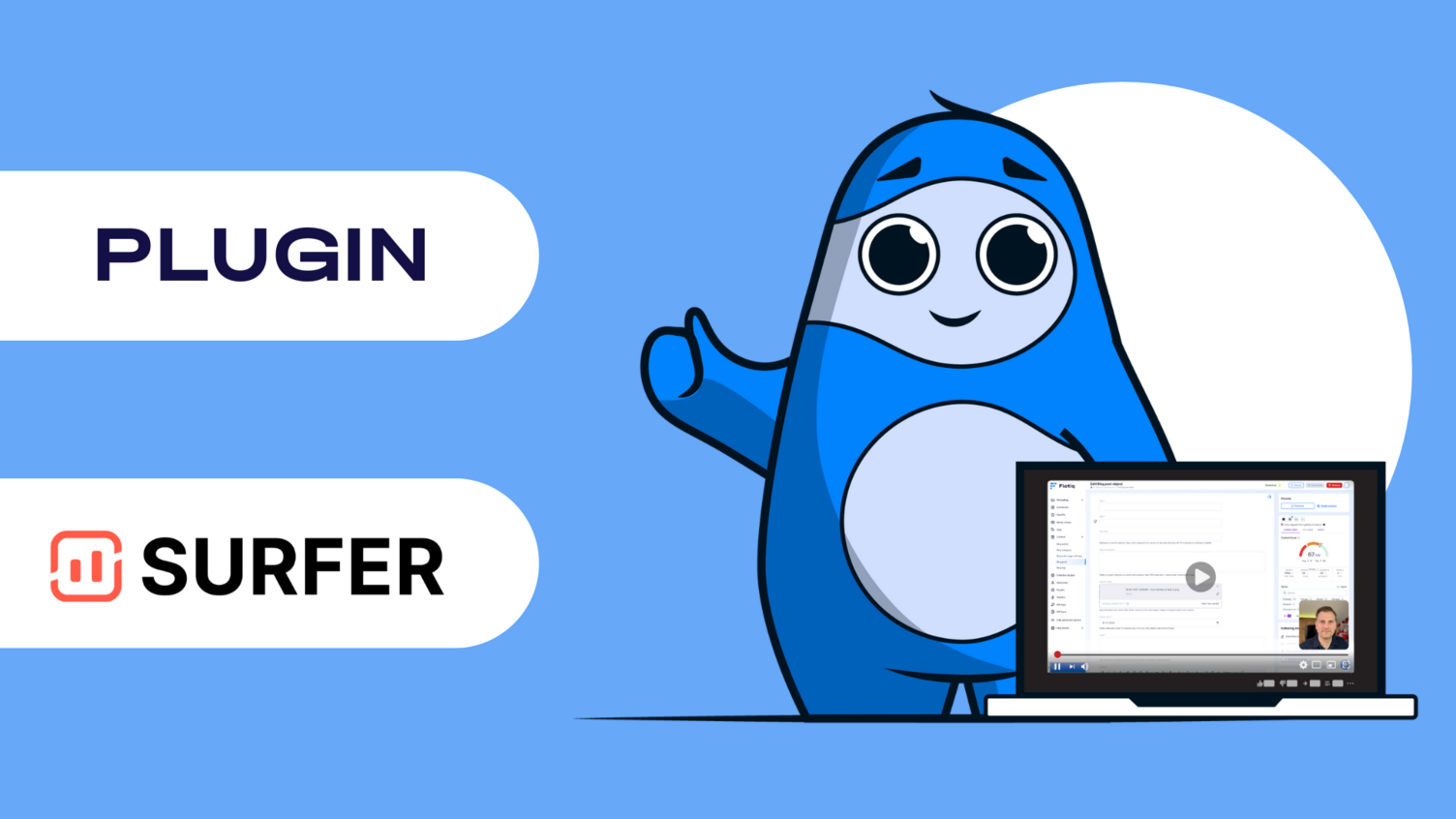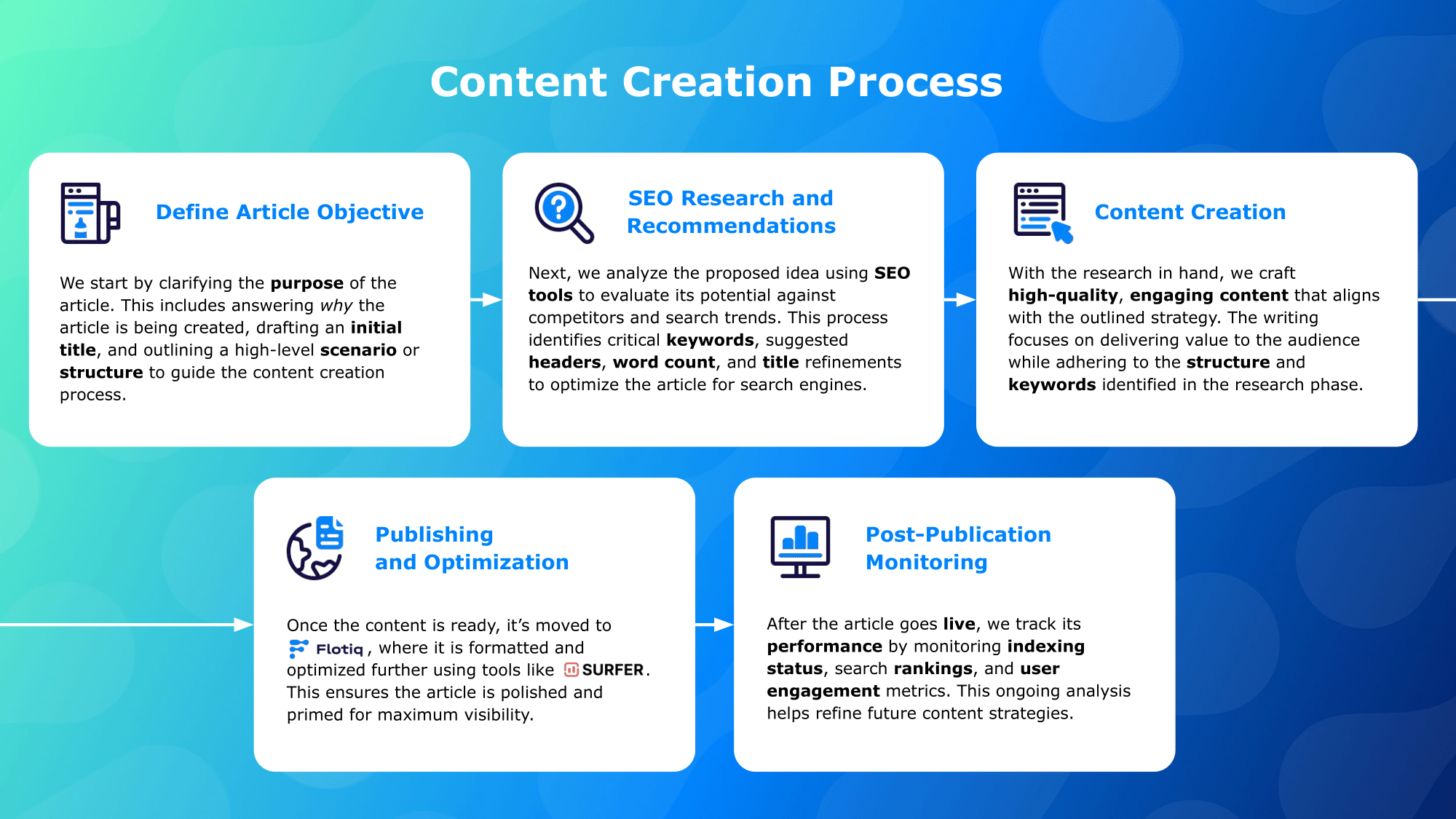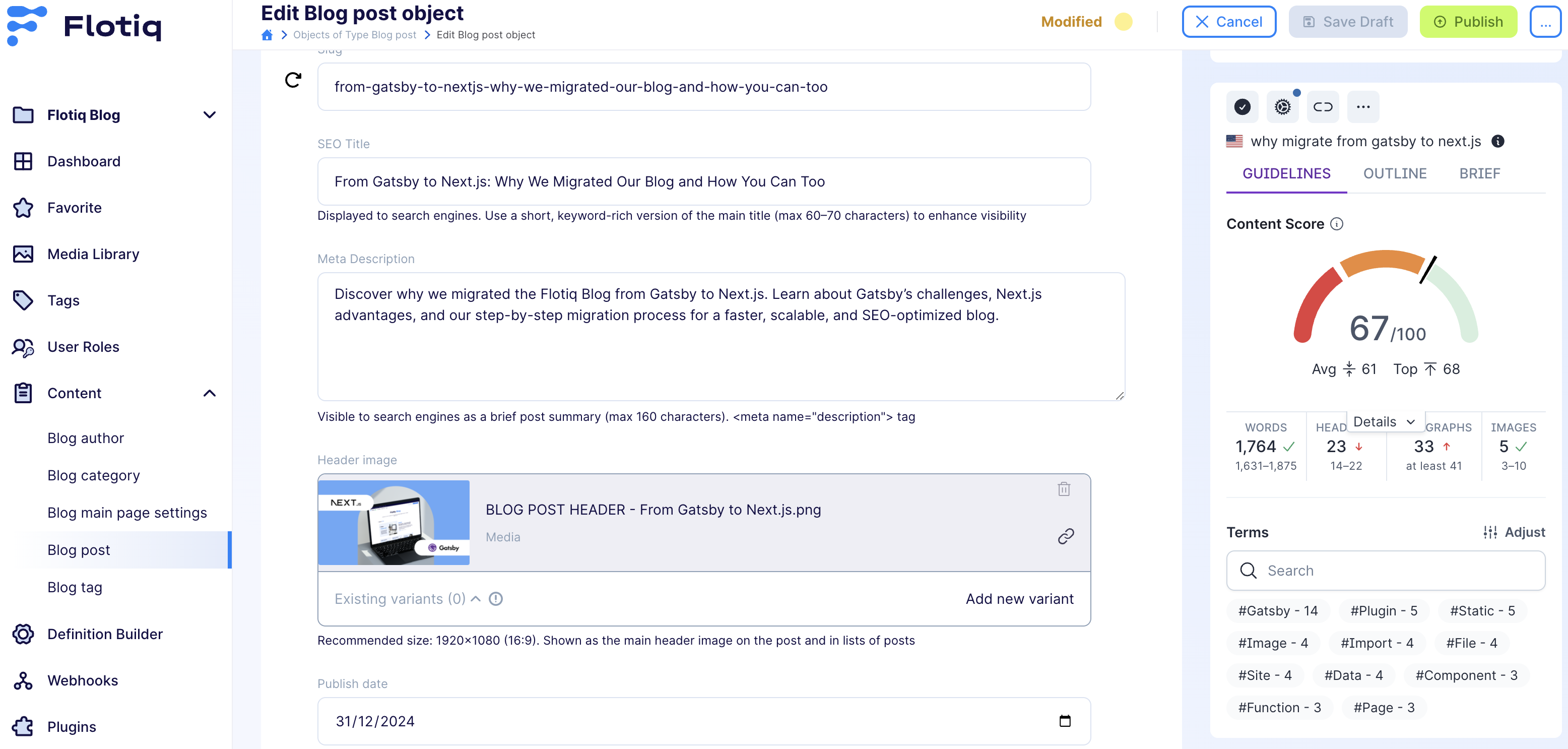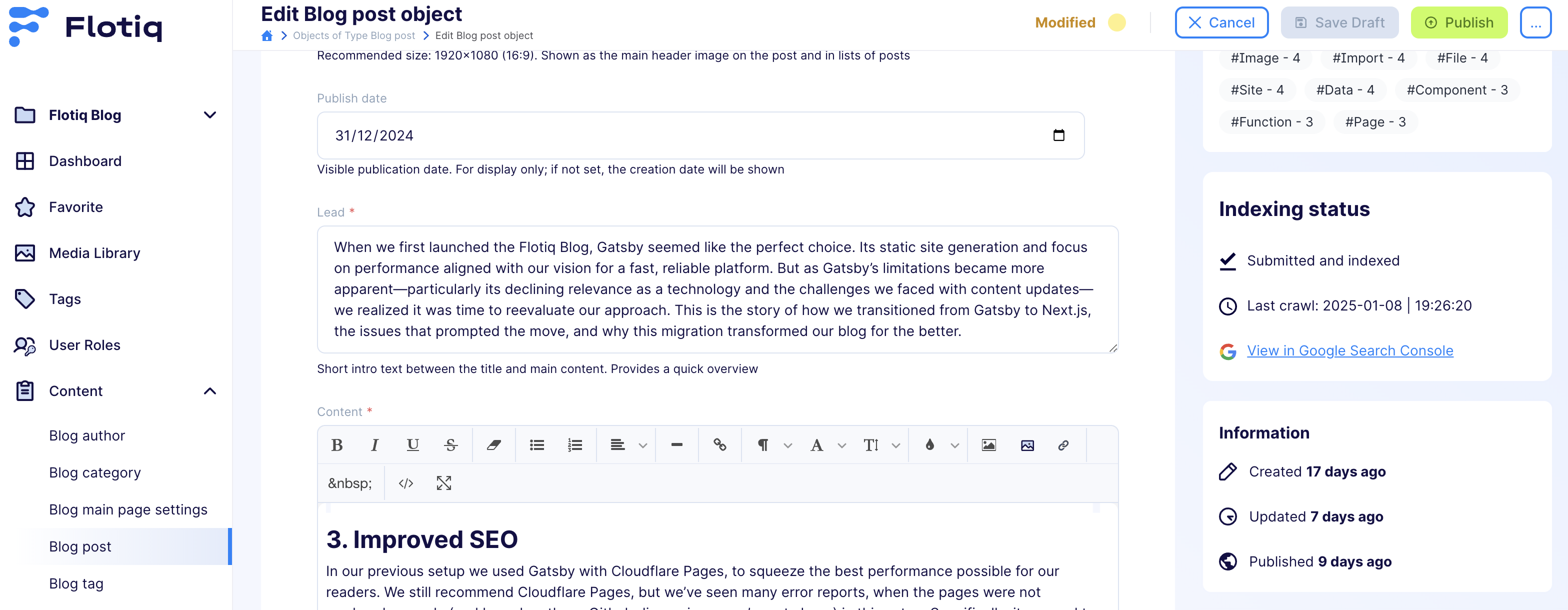.png)


At Flotiq, we’re passionate about creating high-quality, SEO-optimized content that resonates with our audience. In this blog post, I’ll take you behind the scenes to show exactly how we created one of our most successful articles: “FromGatsby to Next.js: Why We Migrated Our Blog and How You Can Too.” This process is not just about writing an article; it’s a comprehensive, structured workflow that ensures our content performs well in search engines and provides real value to our readers. At the end of this post, you’ll find a video where I walk you through the process step-by-step.

We start every article with a clear purpose. For this piece, the objective was to share our experience migrating the Flotiq blog from Gatsby to Next.js while providing actionable insights for developers facing similar challenges.
Using SEO tools, we analyzed the competition and identified high-value keywords like Gatsby to Next.js migration. We also determined the ideal word count, suggested headers, and refined the title for search optimization.
With the research complete, we wrote the article in Google Docs, following the outlined strategy. This step focused on crafting engaging, actionable content that addresses the needs of developers and technical teams.
The finalized article was moved to Flotiq, where we formatted and enhanced it using the Surfer plugin. This tool helped us fine-tune keyword density, improve readability, and ensure alignment with best practices for on-page SEO.

After publishing the article, we monitored its performance. We used the Indexing Status Plugin to confirm that the page was indexed by Google and tracked its ranking for the target keyword. We’re proud to say the article now ranks on the first page of Google for Gatsby to Next.js migration!

In the video, I’ll walk you through the entire process, showing how we applied this framework to create the article. Here’s what you can expect:
Brief explanation why this process is essential for our content strategy.
I’ll present a graphic outlining our five-step process, emphasizing its importance and benefits.
I’ll summarize the process, highlight key takeaways, and encourage viewers to explore Flotiq as their content management solution.
This video isn’t just a tutorial—it’s a blueprint for creating high-performing content that combines strategic planning, powerful tools, and a results-driven mindset. If you want to create articles that rank high on Google and resonate with your audience, this process is a great place to start.
Have questions or want to share your thoughts? Write to me at [email protected]